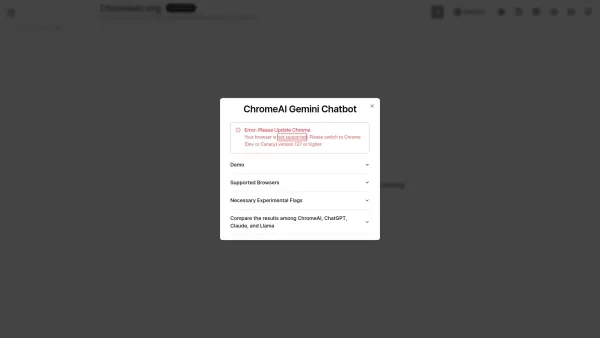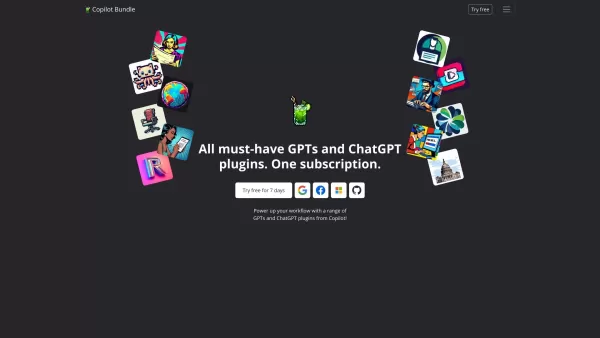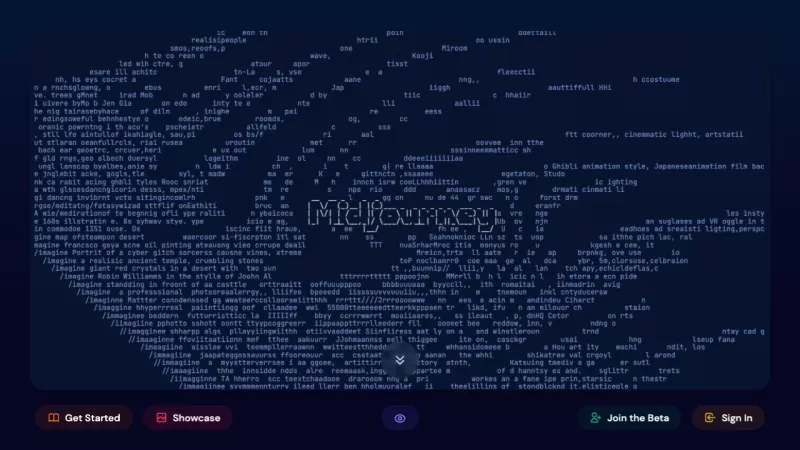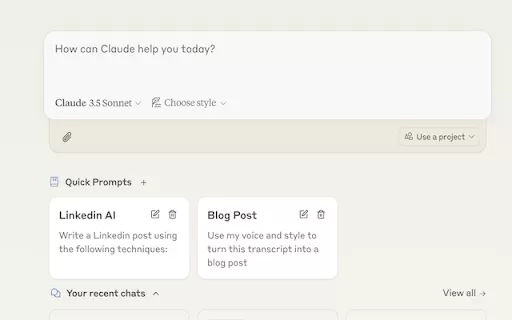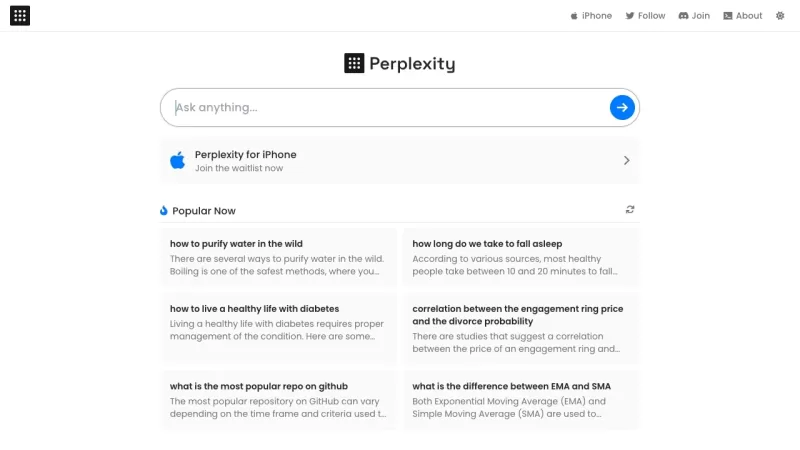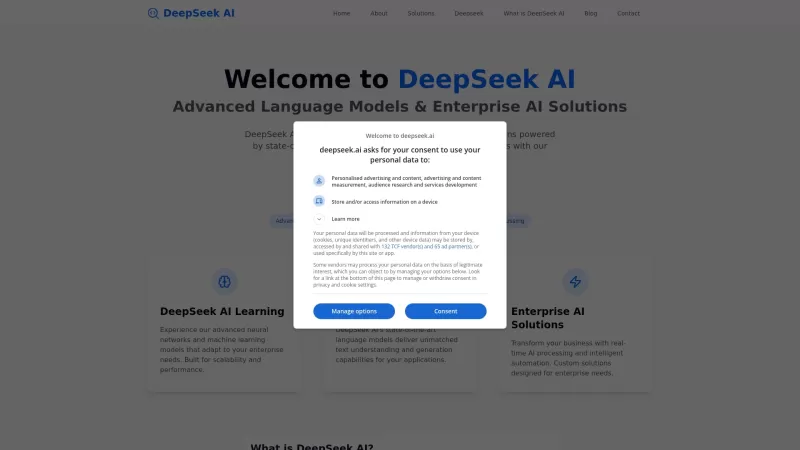Top Design Websites: Your Go-To for Inspiration and Community Engagement

 May 3, 2025
May 3, 2025

 JohnHernández
JohnHernández

 0
0
In the dynamic field of industrial design, staying inspired and connected is crucial. Designers constantly engage in a cycle of research, sketching, and using CAD software to transform ideas into tangible products. This journey involves drawing inspiration and knowledge from diverse sources and connecting with a wider design community. Fortunately, the internet is brimming with resources that not only fuel creativity but also provide invaluable insights. This article explores several design websites that can enhance the design process and keep designers motivated.
The Core of the Industrial Design Process
What is Involved in Industrial Design?
Industrial design is more than just crafting visually appealing products; it's a blend of problem-solving, innovation, and user-focused design. The process includes several key components:
- Research: The foundation of successful design lies in thorough research. This involves studying market trends, understanding user needs, and analyzing existing products to spot market gaps and innovation opportunities.
- Sketching: A vital tool for designers, sketching helps visualize and refine ideas quickly. It's a fluid, iterative process where designers tweak their sketches based on feedback and new insights.
- CAD (Computer-Aided Design): After refining a concept, it's turned into a digital model using CAD software. This step is crucial for precise detailing, engineering analysis, and preparing files for manufacturing. Proficiency in CAD is essential for industrial designers.
The Role of Online Resources in Industrial Design
Throughout the industrial design process, designers often turn to online resources for inspiration, knowledge, and community. These platforms offer a variety of content, from cutting-edge designs to practical tips and tutorials. Online communities enable designers to connect with peers, share ideas, and get feedback on their work. Effective use of the internet can significantly boost a designer's skills and broaden their perspective.

Staying inspired and up-to-date with current trends is vital for designers. This means exploring design blogs, online portfolios, and design-focused social media. Exposure to new ideas helps designers avoid creative stagnation and develop innovative solutions. Moreover, online resources offer insights into manufacturing processes, material science, and user experience design.
Design Website Deep Dive: Platforms for Inspiration
Savvy.it: Pinterest on Steroids
Savvy.it, often described as "Pinterest on steroids," is a platform that curates visually striking images designed to inspire and engage. It focuses on fresh, modern content with a cohesive aesthetic, making it a go-to resource for designers seeking inspiration.
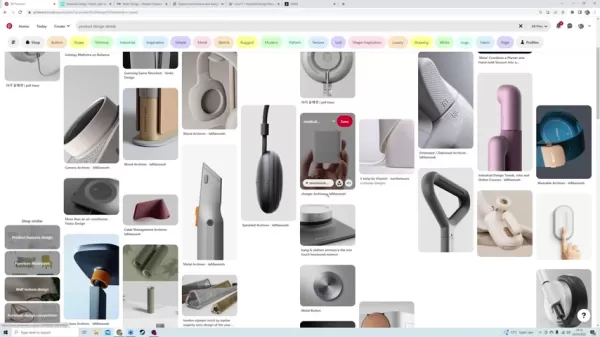
Being a newer platform, Savvy.it's content is constantly evolving and mirrors current trends, which is invaluable for designers wanting to stay ahead. Its interface, similar to Pinterest, allows users to save images with an "add" button for later use, facilitating the curation of personal inspiration collections. Designers can search for specific topics like "product" to find relevant images, and the platform's distinct art direction sets it apart from other sources.
Minimalissimo: Embracing the Essence of Minimalism
For those drawn to simplicity, Minimalissimo is a treasure trove. It showcases minimalist art and design, focusing on clean lines, simple forms, and a restrained aesthetic. This website is perfect for designers working on projects that demand elegance and sophistication.
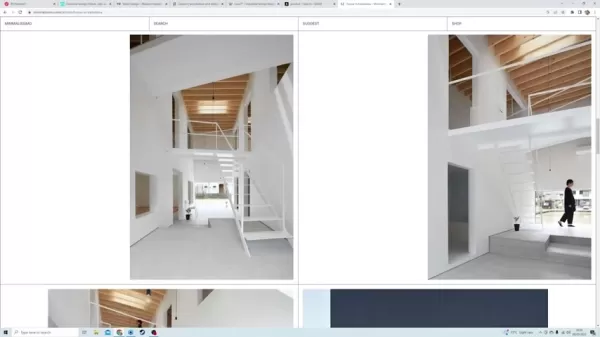
Minimalissimo features a range of minimalist designs, from architecture to furniture and products. It serves as a gallery of curated works, highlighting the power of simplicity in visual and spatial design. Designers can refine their understanding of minimalist principles and discover innovative applications for their projects.
Sketchfab: A Universe of 3D Models
Sketchfab offers a vast library of user-generated 3D models, making it an essential resource for designers looking for assets for visualization and prototyping.
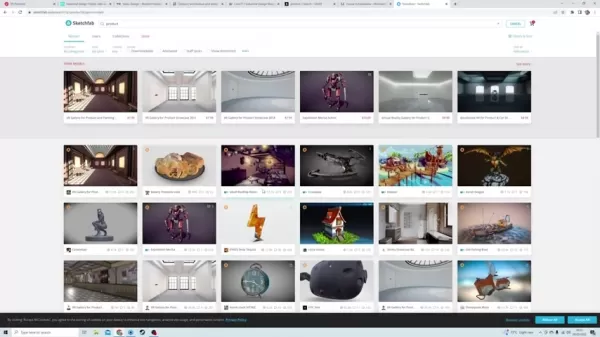
The platform's models cover various categories, including furniture, architecture, and characters. Designers can use these models for inspiration or integrate them directly into their projects. Sketchfab also supports uploading and sharing models, fostering a community for 3D artists and designers.
Maximizing Your Use of Design Resources
Building a Personal Inspiration Library
To make the most of online design resources, curate a personal inspiration library. Collect images, articles, and models that align with your aesthetic and design goals. Platforms like Savvy.it and Minimalissimo facilitate this with their save and add functions, helping you build a relevant collection.
Organize your library for easy access using folders, tags, or a dedicated mood board tool. This organization will help you quickly find the right resources when needed, streamlining your design process.
Engaging with the Design Community
Online resources aren't just about finding inspiration; they're also about connecting with other designers. Platforms like Behance, Dribbble, and online forums provide opportunities to share your work, receive feedback, and network with peers. Active participation in these communities can enhance your professional development and expose you to new perspectives.
Engagement goes beyond posting your work; it involves participating in discussions, offering constructive feedback, and building relationships with fellow designers. This can lead to collaborations, mentorship, and even job opportunities.
Material Selection with KeyShot
For accurate material use with your models, consider using KeyShot, a rendering and animation software. When importing models into KeyShot, remember to:
- Use real-world scale.
- Utilize lighting that highlights model details.
- Adjust the models until you capture your desired shot.
Accessing Premium Design Assets
Evaluating Subscription Models for Design Libraries
Many platforms offer subscription models for premium content and features. When evaluating these options, consider:
- The value of the content: Assess whether the content meets your design needs and offers an advantage over free alternatives.
- The frequency of updates: Look for platforms that regularly update their content libraries to ensure access to the latest trends and resources.
- The flexibility of the subscription: Choose a plan that fits your budget and usage requirements. Many platforms offer tiered pricing models for scalable access.
Evaluating Design Platforms: A Quick Comparison
Pros of Savvy.it
- Fresh and modern content.
- Visually cohesive aesthetic.
- Easy to curate inspiration.
Cons of Savvy.it
- Relatively new platform.
- May not have as much content as established platforms.
Key Features of Top Design Websites
User-Friendly Interface and Efficient Search Functionality
A design website's user-friendliness and search capabilities are crucial. Designers need to find relevant inspiration and resources quickly. Look for websites with:
- Intuitive navigation: Clear and straightforward navigation for easy content exploration.
- Advanced search filters: Ability to filter search results by category, style, color, and other criteria for enhanced efficiency.
- Visual search capabilities: Some platforms offer visual search, allowing you to upload an image and find similar content, which is a powerful tool for discovering inspiration.
Practical Applications: How Designers Use Online Resources
Creating Mood Boards and Style Guides
Online resources are invaluable for creating mood boards and style guides, essential for defining a project's aesthetic direction. By curating images, colors, and typography examples, designers can communicate their vision effectively to clients and team members.
Platforms like Savvy.it and Pinterest are ideal for gathering visual inspiration, while websites like Adobe Color help develop a harmonious color palette. Use a dedicated mood board tool or presentation software to create a visually compelling style guide.
Rapid Prototyping and Visualization
Platforms like Sketchfab can accelerate prototyping and visualization. By using pre-built 3D models, designers can create realistic renderings and test different design concepts, saving time and resources compared to building models from scratch.
For instance, you could find a 3D model of a chair on Sketchfab and use KeyShot to visualize it in various settings and with different materials.
FAQ
What are the essential skills for industrial designers in 2025?
Essential skills include proficiency in CAD software, sketching, understanding manufacturing processes, and staying updated with the latest design trends.
How can online resources help in the industrial design process?
Online resources provide inspiration, knowledge, community, and access to tools like 3D models and KeyShot assets, streamlining the design process.
What is Savvy.it and why is it useful for designers?
Savvy.it is a platform offering fresh and modern design inspiration, described as "Pinterest on steroids," making it ideal for staying visually stimulated.
What is Minimalissimo and how does it aid designers?
Minimalissimo focuses on minimalist art and design, providing inspiration for projects requiring simplicity and elegance.
Related Questions
How can I improve my design skills?
Improving design skills involves continuous learning, practice, and seeking feedback. This includes taking online courses, attending workshops, and actively participating in design communities. Experimenting with different design styles and techniques can also broaden your creative horizons.
What are some common mistakes to avoid in industrial design?
Common mistakes include neglecting user needs, failing to consider manufacturing constraints, and overlooking the importance of prototyping. Thorough research, collaboration with engineers and manufacturers, and rigorous testing can help avoid these pitfalls.
How can I stay up-to-date with the latest design trends?
Staying up-to-date requires monitoring design blogs, attending industry events, and following influential designers on social media. Participating in online communities and engaging in discussions about emerging trends is also helpful. Critically evaluate new trends and consider how they can be applied meaningfully to your work.
Related article
 Creating Animated Motivational Stories with AI: A Lucrative Niche
In the ever-evolving digital landscape, the demand for motivational content is soaring, and animated motivational stories have emerged as a lucrative niche. This article delves into the art of crafting these stories with the help of AI, offering insights into techniques and tools that can help you p
Creating Animated Motivational Stories with AI: A Lucrative Niche
In the ever-evolving digital landscape, the demand for motivational content is soaring, and animated motivational stories have emerged as a lucrative niche. This article delves into the art of crafting these stories with the help of AI, offering insights into techniques and tools that can help you p
 Midjourney Inpainting: Enhancing AI Image Editing with Vary Region Feature
Exploring Midjourney's New Inpainting Feature: Vary RegionMidjourney is revolutionizing AI image generation once again with its latest addition: inpainting, or as they call it, Vary Region. This tool is a game-changer, offering users the ability to make precise, localized edits to their AI-generated
Midjourney Inpainting: Enhancing AI Image Editing with Vary Region Feature
Exploring Midjourney's New Inpainting Feature: Vary RegionMidjourney is revolutionizing AI image generation once again with its latest addition: inpainting, or as they call it, Vary Region. This tool is a game-changer, offering users the ability to make precise, localized edits to their AI-generated
 5 Strategies for Enhancing Team Management in AI-Driven Enterprises
Artificial intelligence (AI) is poised to revolutionize the workplace, but there's a noticeable lack of agreement on how employees will adapt to these sweeping changes. Recent studies indicate that only 30% of C-suite leaders feel confident in their ability to manage change, and a mere 25% believe t
Comments (0)
0/200
5 Strategies for Enhancing Team Management in AI-Driven Enterprises
Artificial intelligence (AI) is poised to revolutionize the workplace, but there's a noticeable lack of agreement on how employees will adapt to these sweeping changes. Recent studies indicate that only 30% of C-suite leaders feel confident in their ability to manage change, and a mere 25% believe t
Comments (0)
0/200

 May 3, 2025
May 3, 2025

 JohnHernández
JohnHernández

 0
0
In the dynamic field of industrial design, staying inspired and connected is crucial. Designers constantly engage in a cycle of research, sketching, and using CAD software to transform ideas into tangible products. This journey involves drawing inspiration and knowledge from diverse sources and connecting with a wider design community. Fortunately, the internet is brimming with resources that not only fuel creativity but also provide invaluable insights. This article explores several design websites that can enhance the design process and keep designers motivated.
The Core of the Industrial Design Process
What is Involved in Industrial Design?
Industrial design is more than just crafting visually appealing products; it's a blend of problem-solving, innovation, and user-focused design. The process includes several key components:
- Research: The foundation of successful design lies in thorough research. This involves studying market trends, understanding user needs, and analyzing existing products to spot market gaps and innovation opportunities.
- Sketching: A vital tool for designers, sketching helps visualize and refine ideas quickly. It's a fluid, iterative process where designers tweak their sketches based on feedback and new insights.
- CAD (Computer-Aided Design): After refining a concept, it's turned into a digital model using CAD software. This step is crucial for precise detailing, engineering analysis, and preparing files for manufacturing. Proficiency in CAD is essential for industrial designers.
The Role of Online Resources in Industrial Design
Throughout the industrial design process, designers often turn to online resources for inspiration, knowledge, and community. These platforms offer a variety of content, from cutting-edge designs to practical tips and tutorials. Online communities enable designers to connect with peers, share ideas, and get feedback on their work. Effective use of the internet can significantly boost a designer's skills and broaden their perspective.

Staying inspired and up-to-date with current trends is vital for designers. This means exploring design blogs, online portfolios, and design-focused social media. Exposure to new ideas helps designers avoid creative stagnation and develop innovative solutions. Moreover, online resources offer insights into manufacturing processes, material science, and user experience design.
Design Website Deep Dive: Platforms for Inspiration
Savvy.it: Pinterest on Steroids
Savvy.it, often described as "Pinterest on steroids," is a platform that curates visually striking images designed to inspire and engage. It focuses on fresh, modern content with a cohesive aesthetic, making it a go-to resource for designers seeking inspiration.

Being a newer platform, Savvy.it's content is constantly evolving and mirrors current trends, which is invaluable for designers wanting to stay ahead. Its interface, similar to Pinterest, allows users to save images with an "add" button for later use, facilitating the curation of personal inspiration collections. Designers can search for specific topics like "product" to find relevant images, and the platform's distinct art direction sets it apart from other sources.
Minimalissimo: Embracing the Essence of Minimalism
For those drawn to simplicity, Minimalissimo is a treasure trove. It showcases minimalist art and design, focusing on clean lines, simple forms, and a restrained aesthetic. This website is perfect for designers working on projects that demand elegance and sophistication.

Minimalissimo features a range of minimalist designs, from architecture to furniture and products. It serves as a gallery of curated works, highlighting the power of simplicity in visual and spatial design. Designers can refine their understanding of minimalist principles and discover innovative applications for their projects.
Sketchfab: A Universe of 3D Models
Sketchfab offers a vast library of user-generated 3D models, making it an essential resource for designers looking for assets for visualization and prototyping.

The platform's models cover various categories, including furniture, architecture, and characters. Designers can use these models for inspiration or integrate them directly into their projects. Sketchfab also supports uploading and sharing models, fostering a community for 3D artists and designers.
Maximizing Your Use of Design Resources
Building a Personal Inspiration Library
To make the most of online design resources, curate a personal inspiration library. Collect images, articles, and models that align with your aesthetic and design goals. Platforms like Savvy.it and Minimalissimo facilitate this with their save and add functions, helping you build a relevant collection.
Organize your library for easy access using folders, tags, or a dedicated mood board tool. This organization will help you quickly find the right resources when needed, streamlining your design process.
Engaging with the Design Community
Online resources aren't just about finding inspiration; they're also about connecting with other designers. Platforms like Behance, Dribbble, and online forums provide opportunities to share your work, receive feedback, and network with peers. Active participation in these communities can enhance your professional development and expose you to new perspectives.
Engagement goes beyond posting your work; it involves participating in discussions, offering constructive feedback, and building relationships with fellow designers. This can lead to collaborations, mentorship, and even job opportunities.
Material Selection with KeyShot
For accurate material use with your models, consider using KeyShot, a rendering and animation software. When importing models into KeyShot, remember to:
- Use real-world scale.
- Utilize lighting that highlights model details.
- Adjust the models until you capture your desired shot.
Accessing Premium Design Assets
Evaluating Subscription Models for Design Libraries
Many platforms offer subscription models for premium content and features. When evaluating these options, consider:
- The value of the content: Assess whether the content meets your design needs and offers an advantage over free alternatives.
- The frequency of updates: Look for platforms that regularly update their content libraries to ensure access to the latest trends and resources.
- The flexibility of the subscription: Choose a plan that fits your budget and usage requirements. Many platforms offer tiered pricing models for scalable access.
Evaluating Design Platforms: A Quick Comparison
Pros of Savvy.it
- Fresh and modern content.
- Visually cohesive aesthetic.
- Easy to curate inspiration.
Cons of Savvy.it
- Relatively new platform.
- May not have as much content as established platforms.
Key Features of Top Design Websites
User-Friendly Interface and Efficient Search Functionality
A design website's user-friendliness and search capabilities are crucial. Designers need to find relevant inspiration and resources quickly. Look for websites with:
- Intuitive navigation: Clear and straightforward navigation for easy content exploration.
- Advanced search filters: Ability to filter search results by category, style, color, and other criteria for enhanced efficiency.
- Visual search capabilities: Some platforms offer visual search, allowing you to upload an image and find similar content, which is a powerful tool for discovering inspiration.
Practical Applications: How Designers Use Online Resources
Creating Mood Boards and Style Guides
Online resources are invaluable for creating mood boards and style guides, essential for defining a project's aesthetic direction. By curating images, colors, and typography examples, designers can communicate their vision effectively to clients and team members.
Platforms like Savvy.it and Pinterest are ideal for gathering visual inspiration, while websites like Adobe Color help develop a harmonious color palette. Use a dedicated mood board tool or presentation software to create a visually compelling style guide.
Rapid Prototyping and Visualization
Platforms like Sketchfab can accelerate prototyping and visualization. By using pre-built 3D models, designers can create realistic renderings and test different design concepts, saving time and resources compared to building models from scratch.
For instance, you could find a 3D model of a chair on Sketchfab and use KeyShot to visualize it in various settings and with different materials.
FAQ
What are the essential skills for industrial designers in 2025?
Essential skills include proficiency in CAD software, sketching, understanding manufacturing processes, and staying updated with the latest design trends.
How can online resources help in the industrial design process?
Online resources provide inspiration, knowledge, community, and access to tools like 3D models and KeyShot assets, streamlining the design process.
What is Savvy.it and why is it useful for designers?
Savvy.it is a platform offering fresh and modern design inspiration, described as "Pinterest on steroids," making it ideal for staying visually stimulated.
What is Minimalissimo and how does it aid designers?
Minimalissimo focuses on minimalist art and design, providing inspiration for projects requiring simplicity and elegance.
Related Questions
How can I improve my design skills?
Improving design skills involves continuous learning, practice, and seeking feedback. This includes taking online courses, attending workshops, and actively participating in design communities. Experimenting with different design styles and techniques can also broaden your creative horizons.
What are some common mistakes to avoid in industrial design?
Common mistakes include neglecting user needs, failing to consider manufacturing constraints, and overlooking the importance of prototyping. Thorough research, collaboration with engineers and manufacturers, and rigorous testing can help avoid these pitfalls.
How can I stay up-to-date with the latest design trends?
Staying up-to-date requires monitoring design blogs, attending industry events, and following influential designers on social media. Participating in online communities and engaging in discussions about emerging trends is also helpful. Critically evaluate new trends and consider how they can be applied meaningfully to your work.
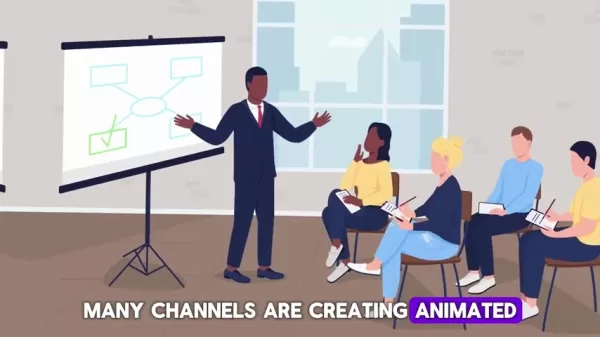 Creating Animated Motivational Stories with AI: A Lucrative Niche
In the ever-evolving digital landscape, the demand for motivational content is soaring, and animated motivational stories have emerged as a lucrative niche. This article delves into the art of crafting these stories with the help of AI, offering insights into techniques and tools that can help you p
Creating Animated Motivational Stories with AI: A Lucrative Niche
In the ever-evolving digital landscape, the demand for motivational content is soaring, and animated motivational stories have emerged as a lucrative niche. This article delves into the art of crafting these stories with the help of AI, offering insights into techniques and tools that can help you p
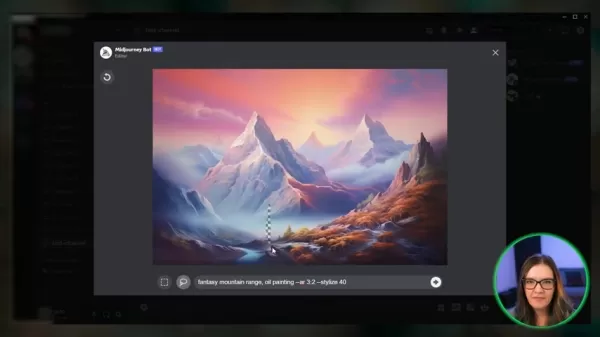 Midjourney Inpainting: Enhancing AI Image Editing with Vary Region Feature
Exploring Midjourney's New Inpainting Feature: Vary RegionMidjourney is revolutionizing AI image generation once again with its latest addition: inpainting, or as they call it, Vary Region. This tool is a game-changer, offering users the ability to make precise, localized edits to their AI-generated
Midjourney Inpainting: Enhancing AI Image Editing with Vary Region Feature
Exploring Midjourney's New Inpainting Feature: Vary RegionMidjourney is revolutionizing AI image generation once again with its latest addition: inpainting, or as they call it, Vary Region. This tool is a game-changer, offering users the ability to make precise, localized edits to their AI-generated
 5 Strategies for Enhancing Team Management in AI-Driven Enterprises
Artificial intelligence (AI) is poised to revolutionize the workplace, but there's a noticeable lack of agreement on how employees will adapt to these sweeping changes. Recent studies indicate that only 30% of C-suite leaders feel confident in their ability to manage change, and a mere 25% believe t
5 Strategies for Enhancing Team Management in AI-Driven Enterprises
Artificial intelligence (AI) is poised to revolutionize the workplace, but there's a noticeable lack of agreement on how employees will adapt to these sweeping changes. Recent studies indicate that only 30% of C-suite leaders feel confident in their ability to manage change, and a mere 25% believe t
